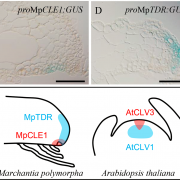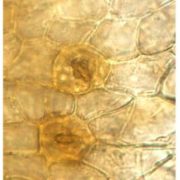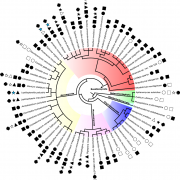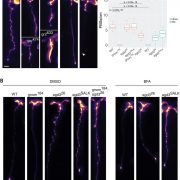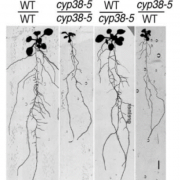A diffusible small-RNA-based Turing system dynamically coordinates organ polarity
 The establishment of adaxial-abaxial polarity during the growth of the leaf primordium is a prerequisite for the formation of the flat, thin leaves observed in most (but not all) plants. The micro-RNAs tasiARF and miR165/6, which form concentration gradients within leaf primordia, are major contributors to the formation of the adaxial and the abaxial domains, respectively. While their importance is well documented, how their gradients help establish and maintain the adaxial-abaxial polarity is not clear. Scacchi, Paszkiewicz, Nguyen et al. show that tasiARF and miR165/6 are the at the center of a self-regulated and organ-autonomous genetic network that can be explained mathematically using a Turing diffusion model. Their computational effort is further supported by their complementary experimental data, which validated the novel genetic interactions predicted by their model. On top of explaining the self-sustained determination of leaf polarity, this model also accounts for the emergence of different leaf shapes within the same plant as well as between different species. Indeed, changing the values of the model’s parameters predicts the emergence of leaf morphologies other than the classic planar architecture. These findings are substantiated by experimental evidence in Arabidopsis mutants as well as similar evidence in other species. (Summary by Carlo Pasini @Crl_Psn) Nature Plants 10.1038/s41477-024-01634-x
The establishment of adaxial-abaxial polarity during the growth of the leaf primordium is a prerequisite for the formation of the flat, thin leaves observed in most (but not all) plants. The micro-RNAs tasiARF and miR165/6, which form concentration gradients within leaf primordia, are major contributors to the formation of the adaxial and the abaxial domains, respectively. While their importance is well documented, how their gradients help establish and maintain the adaxial-abaxial polarity is not clear. Scacchi, Paszkiewicz, Nguyen et al. show that tasiARF and miR165/6 are the at the center of a self-regulated and organ-autonomous genetic network that can be explained mathematically using a Turing diffusion model. Their computational effort is further supported by their complementary experimental data, which validated the novel genetic interactions predicted by their model. On top of explaining the self-sustained determination of leaf polarity, this model also accounts for the emergence of different leaf shapes within the same plant as well as between different species. Indeed, changing the values of the model’s parameters predicts the emergence of leaf morphologies other than the classic planar architecture. These findings are substantiated by experimental evidence in Arabidopsis mutants as well as similar evidence in other species. (Summary by Carlo Pasini @Crl_Psn) Nature Plants 10.1038/s41477-024-01634-x


